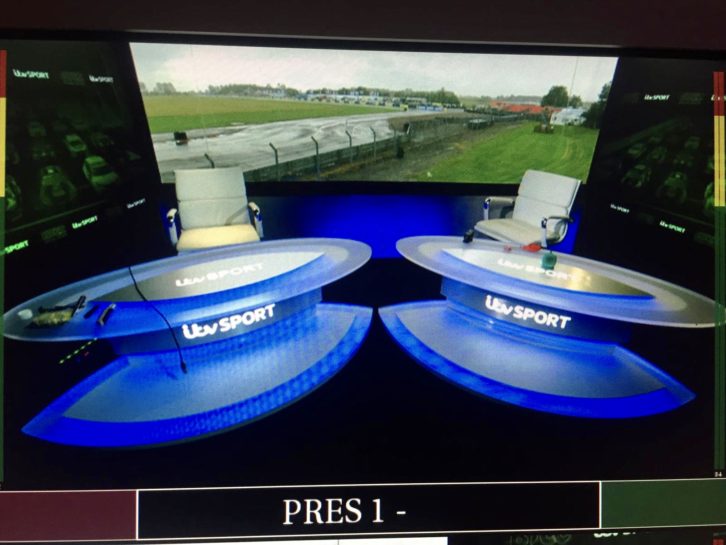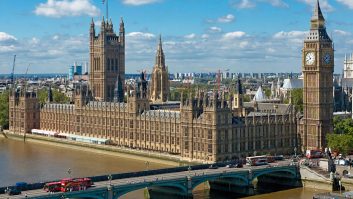To state the obvious, Covid-19 has meant huge changes for everyone in the country. And the knock-on effect has hit the broadcast industry with many variations in production practice. None more so than those involving sports coverage.
“There has been a constant and persistent challenge across all our productions since lockdown,” asserts Roger Pearce, technical director at ITV Sports Productions. “What’s more, this remains the case due to the rapidly changing pandemic situation. As a result, we have to remain alert and agile.”
Pearce reports that ITV Sport’s horse racing operation has been particularly challenging as it was one of the very early live sports to return to terrestrial TV. “Our overriding concern for personnel safety, alongside the restrictions meant that the whole operation needed to be re-planned under very tight scrutiny. This is especially true when it comes to horse racing because of the wide variety of large venues and the complexity of the modern way of covering this as an outside broadcast.”
Safety first
With all of that in mind, how did Pearce and his team achieve social distancing for crew members?

“We achieved this by carrying out a very careful assessment of the role of each person involved in the production. Then it was a case of liaising with the facility supplier to ensure everyone can work safely. Social distancing is an important element of ensuring the operation is safe, but it is part of a broad package of Covid-19 related requirements that have to be covered by our production management teams.”
He continues, “As one memorable occasion from our year’s activities, I would put forward our live British Touring Cars (BTCC) coverage from Brands Hatch. This was a constantly moving target for our production team and OB supplier, Cloudbass. After the months of full lockdown, it was great to find a safe way to deliver our usual full day of live motorsport, but it evolved from the initial maximum home-working model to full presentation and production on-site as the Covid-19 restrictions eased towards this season opener. It meant new technical solutions had to constantly be created.”
Pearce adds, “Of course, there are still lessons to be learned. For example, there have been arguments back and forth about adding crowd noises where there are no spectators. We have taken great care to think about the virtual sound design and finding an appropriate virtual atmosphere for each particular sport. It takes great skill to get the live reaction audio timing right. It is fair to say that we are still learning.”
Positives
On the face of it, measures that have been a necessary part of the workflow during this past year could be seen as restricting OB operations to some degree, but Pearce believes there have been positives that have come out of the circumstances that have been created by the pandemic. “It has certainly made us reassess every aspect of the way we work and challenge the ‘norms’ – and that is no bad thing. The rapid development of technology to enable remote and home-based production will give us all more flexibility to plan our work-life balance in the future. In turn, that will hopefully have mental health benefits longer term. That is a very positive development to come out of a very negative situation.”
Of course, that would suggest that remote production techniques and technology might well become regular practice for a number of sports. Pearce agrees, “Yes, elements of the techniques developed under the banner of ‘remote production’ will become the norm, but they would eventually have evolved that way in any case. The pandemic has just speeded up the process where remote working makes sense for some sports and broadcasters.”
He says that it is important to differentiate between remote working and home working for sports production. “Live home-working is not mature yet due to the general lack of reliable connectivity to the home. It remains a valid workflow where there are no other options – like during a pandemic, for example – but has a way to go to become business as usual.”

So, are there any special remote productions Pearce would care to highlight? “It would be unfair to single out any one operation as far as remote is concerned. We are proud of all our remote productions this year as they have been conjured up at speed and under pressure. Our suppliers have been fantastic in devising new techniques and building new systems whilst working under severe Covid-19 restrictions. I would go so far as to say, we have seen some technical miracles happen this year. And that is no exaggeration.”
But, having garnered more experience of remote production, are there any areas in which the practice might not be appropriate? “Just like any other workflow, remote production will be suitable where there is a reason to use it. By that I mean, for instance, is it the most cost-effective way to operate, or is there a need to keep crew travel to a minimum? Remote working is less likely to be worthwhile or justifiable for a short, one-off ad hoc sports event where there is no fibre connectivity.”
Happy new year?
With all of that in mind, are there any specific challenges facing ITV Sport for 2021? “We were very close to starting the rig for UEFA EURO 2020 tournament when Covid put us into lockdown and the tournament was delayed until 2021. The continued uncertainty over the rescheduled event is going to test all the rights’ holders around the world. We are used to extensive contingency planning, but I think this one is going to keep us on our toes.”
Bearing in mind the experiences of 2020 and the likelihood that restrictions may remain in place for a while, what technological advancements would Pearce like to see manufacturers concentrate on next year? “I would like to see 5G slicing arrive and become widely usable in a practical way for live production. Home and remote-workflows are massively dependent on connectivity and the present non-broadcast options are not robust or reliable enough. But whatever next year brings, our experience of 2020 will stand us in good stead to meet every challenge.”







